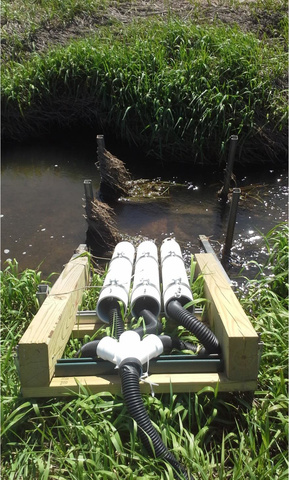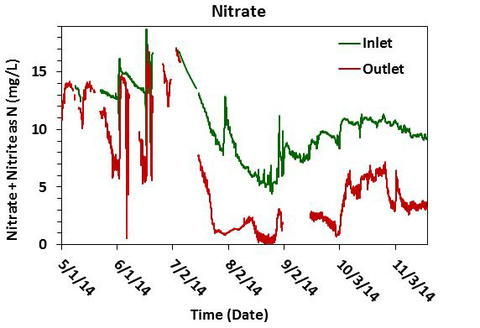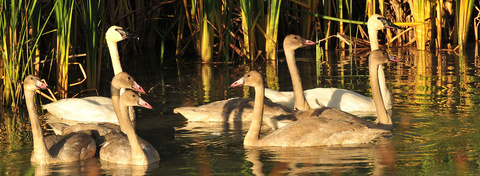
It’s no secret that Iowa waters are sometimes plagued by elevated nutrient levels. Excess nitrogen and phosphorous promote harmful algae blooms, reduce biodiversity, make streams and lakes unsuitable for recreation, and threaten drinking water supplies. Fertilization of Iowa’s corn-soybean system is a factor that contributes to this problem, but the significance of the loss of natural ecological function in Iowa’s landscape is sometimes overlooked.
Iowa’s soils are nutrient-rich and always have been. Prior to European settlement, naturally-occurring nutrients that leached from our rich soils were captured by the 6 million acres of wetlands that dotted the Iowa landscape. As these wetlands were drained and converted to row crop agriculture over the last 150 years, the landscape lost its ability to process nutrients from fertilizer runoff, as well as nutrients released from our soils by cultivation. Less than 300,000 acres of wetlands remain, and most of these are seriously degraded.
If we want to improve Iowa waters, then we must restore some of our lost ecosystem function. This includes wetland construction and restoration. There are many types of wetlands and many restoration programs. The Conservation Reserve Enhancement Program (CREP) develops wetlands designed to remove nitrate-nitrogen from agricultural drainage water in strategic locations.
One such location is the Upper Cedar River watershed in Floyd County. Here researchers established a 24-acre constructed wetland in 2012. The wetland is positioned along Slough Creek, which drains to a Cedar River tributary, Spring Creek. Lowering nitrate levels in the Cedar is critical because of the downstream municipal water supply for Cedar Rapids.

Time-series showing real-time nitrate concentration measured at the Slough Creek CREP near Floyd, Iowa. IIHR water-quality stations are located upstream (inlet) and downstream (outlet) of the CREP wetland.
IIHR—Hydroscience & Engineering researchers have been studying water quality and nutrient processing in the wetland near Slough Creek since 2013. Continuous, real-time sensing equipment quantifies nitrate levels and other important water-quality variables as water enters and exits the wetland.
One of Iowa’s constructed nutrient-reduction wetlands, which researchers hope will reduce nutrient runoff to the state’s rivers and streams, as well as the Gulf of Mexico. Photo by Adam Kiel, Iowa Soybean Association

IIHR Assistant Research Scientist Carrie Davis deployed the first sensors and continues to coordinate monitoring at the site. Researchers also collect samples manually for lab testing at the University of Iowa. Davis’ work has shown modest declines in the nitrate traveling through the wetland, especially after about June 1. Davis says monitoring nitrate levels at the wetland during the past two years has shown the increasing capacity of aquatic vegetation to process nitrate.
Nitrate in the water entering the wetland can exceed 20 parts per million (ppm), more than twice the safe limit for drinking water. As the water warms in late spring, however, this aquatic vegetation and other life in the wetland begins to process nitrate and sequester it as organic material or convert it to harmless nitrogen gas, which is released to the atmosphere. By the end of the summer, nitrate levels in the water leaving the wetland are less than 2 ppm.
Landowner Mike Stricker says his family was motivated to implement this practice on their land. “We want to do the right thing, which is reduce nitrogen and phosphorous heading to the Cedar.” Wetlands not only provide nutrient processing, but they also create badly needed wildlife habitat for birds, reptiles, amphibians, and certain fishes. “I’ve seen several clutches of pheasants in the grass around the wetland, and I’ve seen pelicans and trumpeter swans right on the wetland,” reports Stricker. “There were 2,000–3,000 snow geese on it this spring.”

Documenting performance with water monitoring is critical when taxpayer and farmer resources are used to implement conservation. Farmers need to know what works and what doesn’t, and the public needs to know that these efforts will manifest themselves in improved water quality. IIHR researchers are helping Iowans achieve both of these objectives.